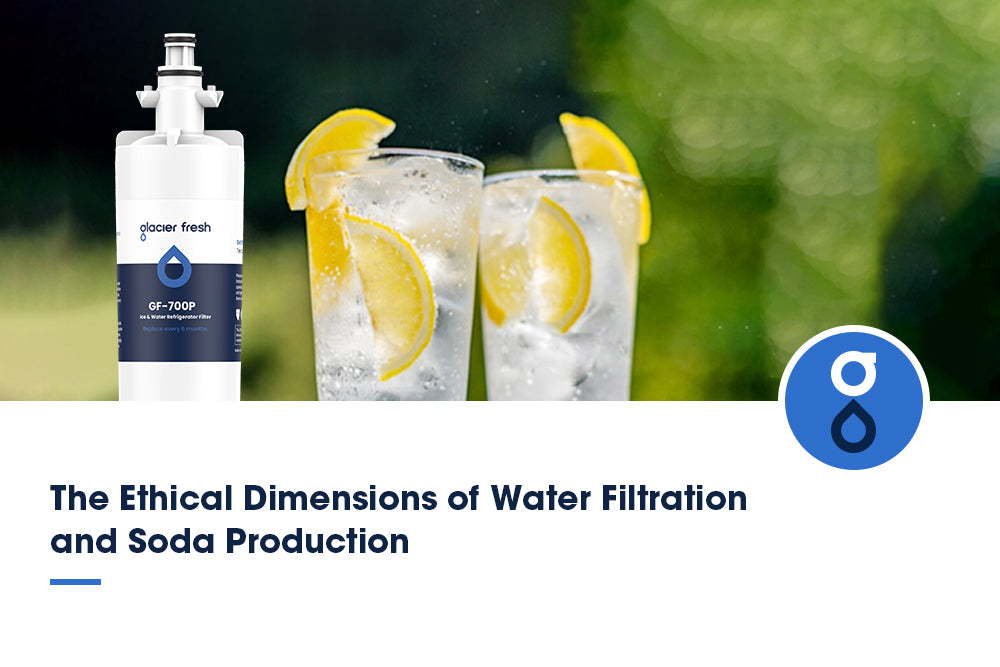Table of Contents:
Wie lange dauert es, bis sich PFAS auflösen?
Faktoren, die die Auflösung von PFAS beeinflussen
Mögliche Umweltauswirkungen
Gesundheits- und Sicherheitsbedenken hinsichtlich des Menschen
Sanierungsstrategien für PFAS gelöst
Richtlinien- und Regulierungsänderungen zu PFAS
Zukünftige Forschungs- und Entwicklungsanstrengungen
FAQs
Abschluss
Haben Sie sich schon einmal gefragt, wie lange es dauert, bis sich PFAS auflöst? Die Auflösungsgeschwindigkeit kann je nach verschiedenen Faktoren variieren. Faktoren wie Temperatur, pH-Wert und das Vorhandensein anderer Substanzen können beeinflussen, wie schnell oder langsam sich PFAS auflöst.
Wie lange dauert es, bis sich PFAS auflösen?

Aufgrund ihrer einzigartigen chemischen Eigenschaften können PFAS dem Abbau standhalten und über längere Zeiträume in der Umwelt verbleiben. Um die durch PFAS verursachte Umweltschädigung zu bekämpfen, werden Sanierungstechniken eingesetzt. Diese Techniken zielen darauf ab, die Chemikalien zu entfernen oder zu neutralisieren und die betroffenen Gebiete wiederherzustellen. Die Wirksamkeit dieser Techniken kann jedoch je nach Faktoren wie Art und Konzentration der PFAS und den Umweltbedingungen variieren.
Um Ihnen ein besseres Verständnis zu vermitteln, finden Sie hier eine Tabelle mit einer Zusammenfassung der Auflösungszeiten verschiedener PFAS-Verbindungen:

Diese Zeiträume geben einen allgemeinen Überblick über die Auflösungsgeschwindigkeit von PFAS-Verbindungen. Es ist wichtig zu beachten, dass diese Zahlen je nach verschiedenen Faktoren variieren können und weitere Forschung erforderlich ist, um das Verhalten und den Abbau von PFAS in verschiedenen Umweltbedingungen vollständig zu verstehen.
Faktoren, die die Auflösung von PFAS beeinflussen
Es ist davon auszugehen, dass verschiedene Faktoren die Auflösung von PFAS beeinflussen. Hier sind drei Schlüsselfaktoren, die bei der Bestimmung des Zeitrahmens und der Umweltauswirkungen der PFAS-Auflösung eine Rolle spielen:
- Chemische Eigenschaften: PFAS-Verbindungen haben einzigartige chemische Eigenschaften, die ihre Löslichkeit beeinflussen. Faktoren wie die Länge der Kohlenstoffkette, das Vorhandensein funktioneller Gruppen und der Fluorierungsgrad können sich darauf auswirken, wie leicht sich PFAS in Wasser oder anderen Lösungsmitteln auflöst.

- Umweltbedingungen: Die Bedingungen, unter denen PFAS vorhanden sind, können sich auch auf deren Auflösung auswirken. Faktoren wie Temperatur, pH-Wert und das Vorhandensein anderer Chemikalien können die Geschwindigkeit beeinflussen, mit der PFAS zerfällt und sich in der Umwelt verteilt.
- Boden- und Sedimentzusammensetzung: Die Zusammensetzung von Boden oder Sediment, in dem PFAS vorhanden ist, kann sich auf deren Auflösung auswirken. Faktoren wie der Gehalt an organischen Stoffen, die mineralische Zusammensetzung und der Feuchtigkeitsgehalt können beeinflussen, wie schnell sich PFAS auflöst und durch den Boden oder das Sediment bewegt.

Das Verständnis dieser Faktoren ist entscheidend für die Bewertung der potenziellen Risiken einer PFAS-Kontamination und die Entwicklung wirksamer Sanierungsstrategien. Durch die Berücksichtigung dieser Faktoren können Wissenschaftler und Umweltexperten den Zeitrahmen und die potenziellen Umweltauswirkungen der PFAS-Auflösung besser vorhersagen.
Mögliche Umweltauswirkungen
Nach der Auflösung von PFAS können potenzielle Umweltauswirkungen auftreten. Diese Auswirkungen können von Umweltverschmutzung bis hin zu ökologischen Folgen reichen, die langfristige Auswirkungen auf das Ökosystem haben können.
Hier ist eine Aufschlüsselung der potenziellen Umweltauswirkungen, die Sie kennen sollten:
- Umweltverschmutzung: Sobald PFAS gelöst sind, können sie verschiedene Umweltbereiche wie Boden, Wasser und Luft verunreinigen. Diese Verunreinigung kann sich ausbreiten und viele Organismen beeinträchtigen, darunter Pflanzen, Tiere und Menschen.
- Ökologische Folgen: Das Vorhandensein von PFAS in der Umwelt kann das empfindliche Gleichgewicht von Ökosystemen stören. Es kann sich in der Nahrungskette anreichern und hohe PFAS-Konzentrationen in Spitzenprädatoren ansammeln. Dies kann zu einer Verringerung der Artenvielfalt führen, da bestimmte Arten empfindlicher auf PFAS-Belastung reagieren als andere.
- Langzeiteffekte: Die Langzeiteffekte einer PFAS-Kontamination werden noch erforscht. Studien haben jedoch mögliche Zusammenhänge zwischen PFAS-Exposition und negativen gesundheitlichen Folgen für Mensch und Tier gezeigt. Zu diesen Effekten können Entwicklungsstörungen, Fortpflanzungsprobleme und ein erhöhtes Risiko für bestimmte Krankheiten gehören.
Es ist von entscheidender Bedeutung, diese potenziellen Umweltauswirkungen anzugehen und zu mildern, um die Gesundheit des Ökosystems und das Wohlergehen aller Lebewesen zu schützen.
Gesundheits- und Sicherheitsbedenken hinsichtlich des Menschen

Hier sind drei wichtige Punkte, die Sie hinsichtlich PFAS und der Belastung des Menschen beachten sollten:
- Exposition des Menschen: PFAS können auf verschiedenen Wegen in den menschlichen Körper gelangen, unter anderem durch die Aufnahme kontaminierter Lebensmittel und Wasser, das Einatmen kontaminierter Luft und den Hautkontakt mit PFAS-haltigen Produkten. Das bedeutet, dass Sie und Ihre Angehörigen diesen schädlichen Chemikalien täglich ausgesetzt sein können.
- Gesundheitsrisiken: Studien haben die PFAS-Exposition mit verschiedenen Gesundheitsproblemen in Verbindung gebracht, darunter Entwicklungsverzögerungen bei Säuglingen und Kindern, verminderte Fruchtbarkeit, erhöhte Cholesterinwerte, Funktionsstörungen des Immunsystems und ein erhöhtes Risiko für bestimmte Krebsarten. Aufgrund dieser Gesundheitsrisiken ist es entscheidend, die Exposition gegenüber PFAS so weit wie möglich zu minimieren.
- Minderungsmaßnahmen: Um Ihre Belastung durch PFAS zu reduzieren, ist es wichtig, informiert zu sein und proaktive Maßnahmen zu ergreifen. Dazu können beispielsweise die Vermeidung von Produkten gehören, die PFAS enthalten, die Verwendung zertifizierter Wasserfiltersysteme zur Entfernung von PFAS und das Eintreten für strengere Vorschriften zur Verwendung und Entsorgung von PFAS.
Sanierungsstrategien für PFAS gelöst
Eine Möglichkeit, das Problem der PFAS-Kontamination anzugehen, ist die Umsetzung wirksamer Sanierungsstrategien. Diese Strategien zielen darauf ab, das Vorkommen von PFAS in der Umwelt zu beseitigen oder zu verringern und so eine sicherere und gesündere Zukunft zu gewährleisten.
Kostengünstige Techniken:
- Aktivkohlefiltration : Bei dieser Methode werden Aktivkohle verwendet, um PFAS-Verunreinigungen aus Wasser oder Boden zu adsorbieren und so effektiv aus der Umwelt zu entfernen.
- Bioremediation: Bei dieser Technik werden Mikroorganismen genutzt, um PFAS-Verbindungen in weniger schädliche Substanzen zu zerlegen und so ihre Konzentration im Ökosystem zu verringern.
Überwachungsmethoden:
- Grundwasserprobenahme: Eine regelmäßige Überwachung der Grundwasserquellen kann dabei helfen, Gebiete mit hoher PFAS-Kontamination zu identifizieren und gezielte Sanierungsmaßnahmen einzuleiten.
- Biomonitoring: Durch die Analyse der PFAS-Werte in menschlichem oder tierischem Gewebe kann das Biomonitoring wertvolle Erkenntnisse über die Belastung und die potenziellen Gesundheitsrisiken im Zusammenhang mit PFAS liefern.
Behandlungstechnologien:
- Fortschrittliche Oxidationsprozesse: Diese Technologien nutzen starke Oxidationsmittel, um PFAS-Verbindungen abzubauen und sie so weniger schädlich zu machen.
- Elektrochemische Oxidation: Bei dieser Methode wird elektrischer Strom zum Abbau von PFAS-Verbindungen eingesetzt, was eine vielversprechende Lösung für deren Sanierung darstellt.
Richtlinien- und Regulierungsänderungen zu PFAS

Die politischen und regulatorischen Änderungen in Bezug auf PFAS haben Debatten und Diskussionen unter Experten und Interessenvertretern ausgelöst. Diese Änderungen zielen darauf ab, die mit der PFAS-Kontamination verbundenen Umwelt- und Gesundheitsrisiken anzugehen. Hier sind drei wichtige Aspekte, die in der aktuellen Situation zu berücksichtigen sind:
- Umsetzung politischer Maßnahmen: Regierungen auf verschiedenen Ebenen arbeiten daran, strengere Vorschriften und Richtlinien für die Verwendung, Entsorgung und Sanierung von PFAS umzusetzen. Dazu gehört die Festlegung von Grenzwerten für PFAS-Konzentrationen im Trinkwasser und die Entwicklung von Protokollen für Sanierungsmaßnahmen.
- Einhaltung der Vorschriften durch die Industrie: Branchen, die PFAS in ihren Produkten oder Prozessen verwenden, werden zunehmend strenger kontrolliert und stehen unter Druck, die neuen Vorschriften einzuhalten. Dazu gehört die Suche nach alternativen Chemikalien oder Methoden, um die Verwendung von PFAS zu reduzieren oder zu eliminieren, sowie die Umsetzung ordnungsgemäßer Entsorgungspraktiken, um weitere Verunreinigungen zu verhindern.
- Öffentliches Bewusstsein: Die politischen Veränderungen haben die PFAS-Verunreinigung auch ins öffentliche Rampenlicht gerückt und das Bewusstsein für die potenziellen Risiken und Auswirkungen geschärft. Dieses gesteigerte Bewusstsein hat dazu geführt, dass Regierung und Industrie Transparenz, Rechenschaftspflicht und Maßnahmen fordern.
Insgesamt treiben die politischen und regulatorischen Änderungen in Bezug auf PFAS die Bemühungen voran, die mit dieser Chemikalienklasse verbundenen Risiken zu mindern. Indem sie sich auf die Umsetzung politischer Maßnahmen, die Einhaltung durch die Industrie und die Sensibilisierung der Öffentlichkeit konzentrieren, streben die Beteiligten eine Zukunft an, in der die PFAS-Kontamination wirksam angegangen und minimiert wird.
Zukünftige Forschungs- und Entwicklungsanstrengungen

Laufende Forschungs- und Entwicklungsbemühungen konzentrieren sich darauf, nachhaltigere Alternativen zu PFAS-Chemikalien in verschiedenen Branchen zu finden. Die Zukunft ist vielversprechend und bietet Potenzial für innovative Lösungen und technologische Fortschritte, die unseren Umgang mit PFAS-Verunreinigungen revolutionieren können. Hier sind einige spannende Forschungsbereiche:
Materialwissenschaft
Wissenschaftler arbeiten an der Entwicklung neuer Materialien, die ähnliche Eigenschaften wie PFAS-Chemikalien aufweisen, aber umweltfreundlich und ungiftig sind. Durchbrüche in der Nanotechnologie könnten zu fortschrittlichen Materialien führen, mit denen PFAS effizient aus kontaminierten Wasserquellen entfernt werden können.
Biologische Sanierung
Forscher untersuchen derzeit die Verwendung natürlich vorkommender Mikroorganismen zum Abbau von PFAS-Chemikalien in Boden und Wasser. Gentechnik könnte bei der Entwicklung von Bakterien oder Enzymen, die PFAS-Verbindungen abbauen können, von entscheidender Bedeutung sein.
Diese zukünftigen Innovationen sind vielversprechend für die Lösung des PFAS-Problems. Mit den wissenschaftlichen Durchbrüchen können wir uns auf eine Zukunft freuen, in der die Industrie ohne schädliche PFAS-Chemikalien arbeiten kann. Der technologische Fortschritt wird den Weg für nachhaltigere Alternativen ebnen und künftigen Generationen eine sauberere und sicherere Umwelt gewährleisten.
FAQs
Gibt es natürliche Prozesse, die PFAS abbauen können?
Biologischer Abbau, photokatalytischer Abbau und Fenton-Oxidation sind natürliche Prozesse, die PFAS abbauen können. Diese Prozesse zerlegen die Chemikalien in harmlose Nebenprodukte und entfernen sie aus der Umwelt.
Gibt es bestimmte Branchen oder Bereiche, die anfälliger für eine PFAS-Kontamination sind?
In bestimmten Branchen kann die PFAS-Kontamination ein Problem darstellen. Zu den Bereichen, in denen das Risiko einer PFAS-Kontamination besteht, gehören die Bereiche in der Nähe von Flughäfen, Militärstützpunkten und Industrieanlagen. Diese Kontamination kann Risiken für die öffentliche Gesundheit darstellen.
Abschluss
Zusammenfassend lässt sich sagen, dass PFAS, sobald sie sich auflösen, potenzielle Umweltauswirkungen sowie Gesundheits- und Sicherheitsrisiken für Menschen haben können. Es gibt jedoch Sanierungsstrategien, um dieses Problem anzugehen. Es werden auch politische und regulatorische Änderungen umgesetzt, um eine weitere PFAS-Kontamination zu verhindern. Zukünftige Forschungs- und Entwicklungsanstrengungen sind entscheidend, um wirksamere Lösungen zu finden. Es ist wichtig, die Auswirkungen von PFAS auf unsere Umwelt und Gesundheit weiterhin zu überwachen und anzugehen, um eine sicherere und gesündere Zukunft zu gewährleisten.
















